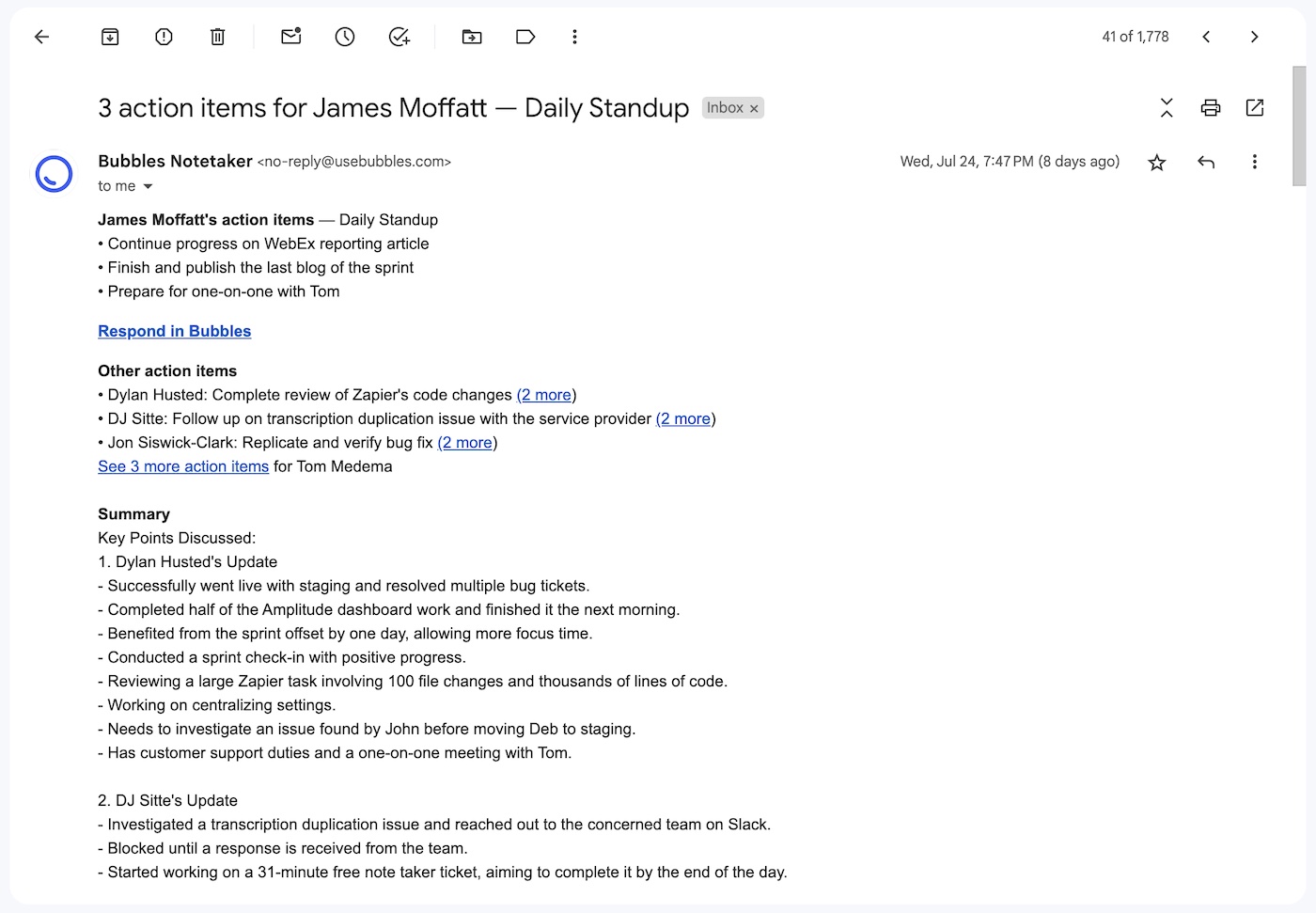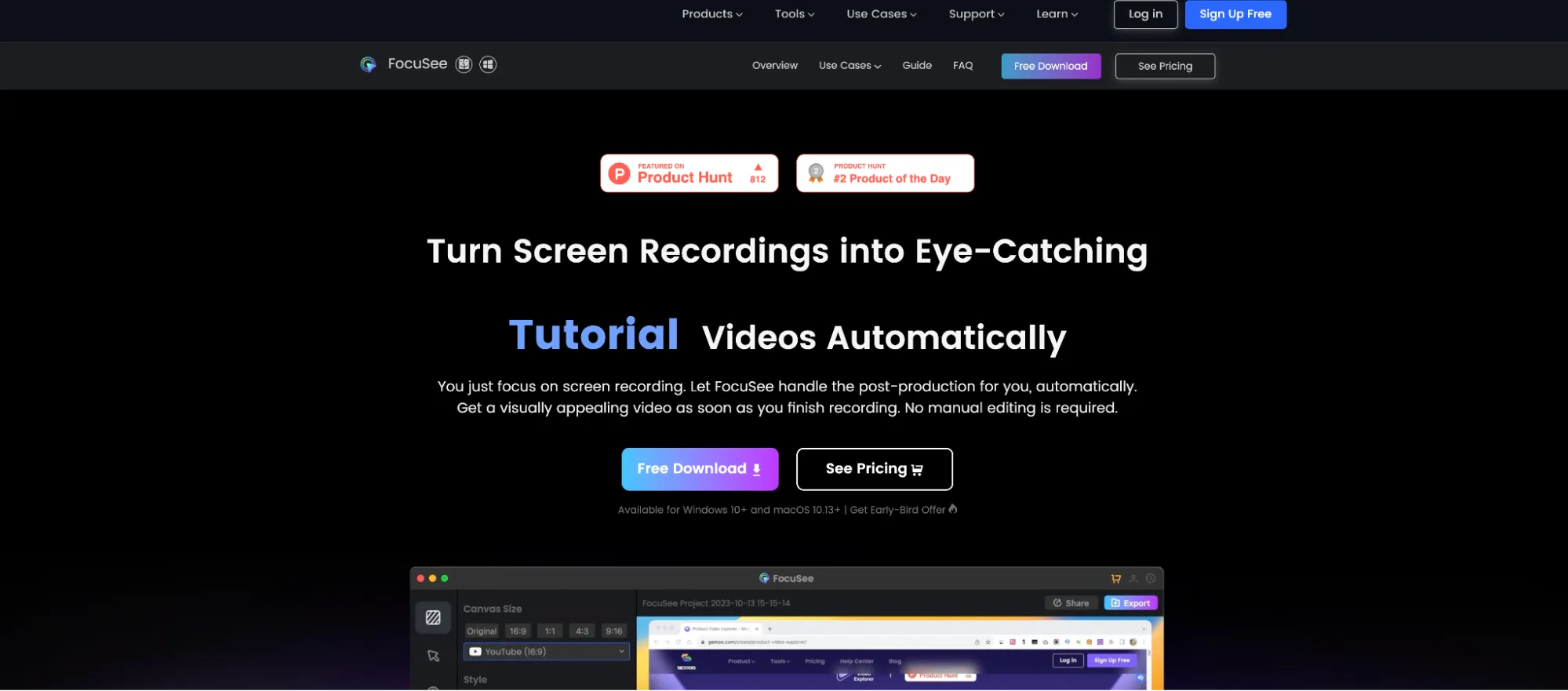
Annual General Meeting (AGM) Guide + Meeting Minutes Template
You only get one shot at an AGM each year, so it’s crucial to make it count. In this guide, we’ll walk you through how to run a successful AGM, covering everything from key objectives to modern tools that can change your AGM game.
An annual general meeting (AGM) is an irreplaceable event that in the corporate calendar, acting as an annual report for all things related to your company or group. A well-oiled AGM provides shareholders and members of an organization an opportunity to discuss the company’s progress, review financial statements, and make decisions about its future.
However, it's increasingly uncommon that all required members of an AGM can be in the same place at the same time. The adoption of a more virtually connected work world means AGMs aren't the same as they once were. In this guide, we will explore everything AGM, including how you can hold the meeting virtually, and how to write meeting minutes efficiently.
Make your
meetings matter
Loved and trusted by 100,000+ users:
- Automatically Record and Transcribe Meetings
- Extremely Accurate Notes, Summaries, and Action Items powered by AI
- Works with Zoom, Google Meet, and Microsoft Teams
- Save time and follow-up with quick async videos
Simply connect your work Google or Microsoft Calendar to get started.
What is an Annual General Meeting?
An annual general meeting (AGM) is a mandatory yearly gathering of a company’s shareholders, where they meet with the board of directors to review the company’s financial & general performance over the past year. Alongside that, there will always be room to discuss any matters that require shareholder approval in an AGM.
It is also a chance for shareholders to hold the board accountable for their actions and ask questions about the company's direction. However, I also want to note that AGMs are not reserved for public companies. Any organization or group of individuals working towards a common goal might want to hold a meeting where everyone must attend, and that will be their version of an AGM.
Key Elements of an AGM:
- Financial Review: Discussion and review of any relevant financial statements, including profit, loss, and overall financial health.
- Board Accountability: Shareholders have the opportunity to ask questions and vote on key issues. This is the time to do it, as you have everyone together at the same time.
- Elections: The AGM typically includes the election or re-election of board members and the appointment of auditors. However, that is probably more common within an AGM of a larger or public company.
- Resolutions: Again, an AGM is often held to resolve issues, so shareholders will likely vote on matters such as approving dividends or changes to the company’s constitution.
What Are the Objectives of an Annual General Meeting?
So, why exactly do people hold these meetings? AGMs have several key objectives that differ from any old board meeting, and in general, they are massive in terms of contribution to the transparency and smooth operation of a company. These include:
- Providing Accountability: The board of directors is held accountable to the shareholders for the company’s performance and financial decisions. Without convening, there might be a lack of responsibility and accountability that would reflect in performance.
- Reviewing Finances: Shareholders receive a detailed overview of the company’s financial performance, including balance sheets, income statements, and cash flow.
- Shareholder Participation: AGMs provide a platform for shareholders to engage with the company’s leadership, ask questions, and voice concerns. Without this opportunity in an annual meeting, it can be easy for shareholders' voices to be lost and for connections to weaken.
- Making Decisions: Shareholders vote on important issues like the appointment of auditors, director elections, dividend declarations, and approval of financial statements. Basically, key decisions that require the presence of those invited to the AGM.
How to Write Meeting Minutes for an AGM
Meeting minutes are an official record of what occurred during the AGM. Writing detailed and accurate minutes is crucial, especially because of how infrequent your AGMs are. Meeting minutes serve as legal records for the decisions made and need to be treated with importance.
To simplify this process in your AGM, you can use AI-powered notetakers like Bubbles. Bubbles is a super efficient tool that automatically records, transcribes, and puts your meeting minutes together.
To begin this automatic process, all you need to do is sign up and connect your calendar. It only takes a few seconds, and from that moment onwards, all meetings on that calendar will have their notes handled for you by Bubbles.
Bubbles also has a great option for an AGM, which is the Bubbles Chrome/Edge extension.This extension allows you to simply paste in a meeting link and have Bubbles Notetaker instantly join your meeting and begin the meeting minutes process. Check out how this looks here:

Bubbles will also generate action items and provide a post-meeting summary, which can be particularly useful for an AGM where you might need to revisit and recap the meeting a few times over the year. Not only this, but think how much easier the job of the company secretary becomes!
Using Bubbles for Meeting Minutes
Bubbles Notetaker will automatically join your virtual AGM, whether hosted on Zoom, Google Meet, or another platform. You also have the ability to personalize your Notetaker and decide which meetings you would like it to auto-join. Here's how it enhances the process:
- Recording and Transcribing: Bubbles records the meeting and generates a transcript, ensuring no detail is overlooked.
- Automated Minutes Generation: After the meeting, Bubbles creates an AGM meeting minutes document with action items and summaries tailored to each attendee. This is sent in a follow-up email to each attendee, alongside a link to the full recording.
- Email Distribution: Once the meeting concludes, the document mentioned in the last point is sent in a follow-up email to each attendee, alongside a link to the full recording.

By using Bubbles, companies can ensure their AGMs are documented with precision and efficiency, saving both time and resources.
AGM Meeting Minutes Template
While Bubbles provides automated minutes, some companies may prefer using a manual template. Here’s a simple example of an AGM meeting minutes template that can be adapted as needed:
Sample AGM Meeting Minutes Template
Meeting Title: Annual General Meeting
Date: [Insert Date]
Time: [Insert Time]
Location: [Insert Venue/Virtual Platform]
Attendees: [List names of attendees, including Board members and key personnel]
Agenda:
1. Call to Order
- The meeting was called to order at [insert time] by [Chairperson/meeting leader name].
- A quorum was present. (Note if a quorum was reached, if not, mention follow-up action).
2. Approval of Previous AGM Minutes
- Minutes of the previous AGM held on [insert date] were reviewed.
- Motion to approve minutes: [Proposer’s name].
- Seconded by: [Seconder’s name].
- Outcome: [Approved/Rejected with amendments].
3. Matters Arising from Previous Minutes
- [List any matters carried forward from the previous meeting].
- Action points from previous meeting: [Briefly discuss progress].
4. Chairperson's Report
- The Chairperson [Name] presented the annual report, summarizing key activities and achievements of the year.
- Highlights include: [Brief summary of report].
- Any questions or comments: [Summarize discussion].
5. Financial Report
- The Treasurer [Name] presented the financial report for the fiscal year [Insert period].
- Highlights of the report include: [Brief overview of income, expenses, and surplus/deficit].
- Auditor's report and recommendations: [If applicable, summarize].
- Questions/Comments: [Summarize].
- Motion to approve financial report: [Proposer’s name].
- Seconded by: [Seconder’s name].
- Outcome: [Approved/Rejected].
6. Election of Officers/Board Members (Where Applicable)
- List of nominees for each position:
- Chairperson: [Nominee’s name]
- Treasurer: [Nominee’s name]
- Secretary: [Nominee’s name]
- Board Members: [List names]
- Voting results:
- Chairperson: [Elected name]
- Treasurer: [Elected name]
- Secretary: [Elected name]
- Board Members: [Elected names]
- New Officers/Board Members were duly elected and will assume office [effective date].
7. Appointment of Auditors
- [Name of the current/appointed auditors] were reappointed/appointed as auditors for the next fiscal year.
- Motion to approve auditor appointment: [Proposer’s name].
- Seconded by: [Seconder’s name].
- Outcome: [Approved/Rejected].
8. Any Other Business (AOB)
- [Summarize any additional issues raised].
- Discussions and resolutions: [Briefly mention any conclusions].
9. Date of Next AGM
- The next AGM will be held on [insert date or indicate that it will be decided later].
10. Adjournment
- The meeting was adjourned at [insert time].
This template can be adapted for any AGM, and will make absolutely sure that all necessary details are captured efficiently. However, for a more automated and detailed approach, using Bubbles will streamline the process and guarantee accuracy. After all, who wants to keep track of the above? I know I wouldn't! Let Bubbles handle it for you and become another director in your AGMs!
Conclusion
An annual general meeting plays a big role in keeping operations running like clockwork throughout a company or organization, whether that is a public or private company. We hope that you now know how to conduct an AGM effectively and how best to write accurate meeting minutes for your AGM - by using Bubbles.
Collaborate better with your team
Get your point across using screen, video, and audio messages. Bubbles is free, and offers unlimited recordings with a click of a button.
.png)
Collaborate better with your team
Get your point across using screen, video, and audio messages. Bubbles is free, and offers unlimited recordings with a click of a button.
.png)











